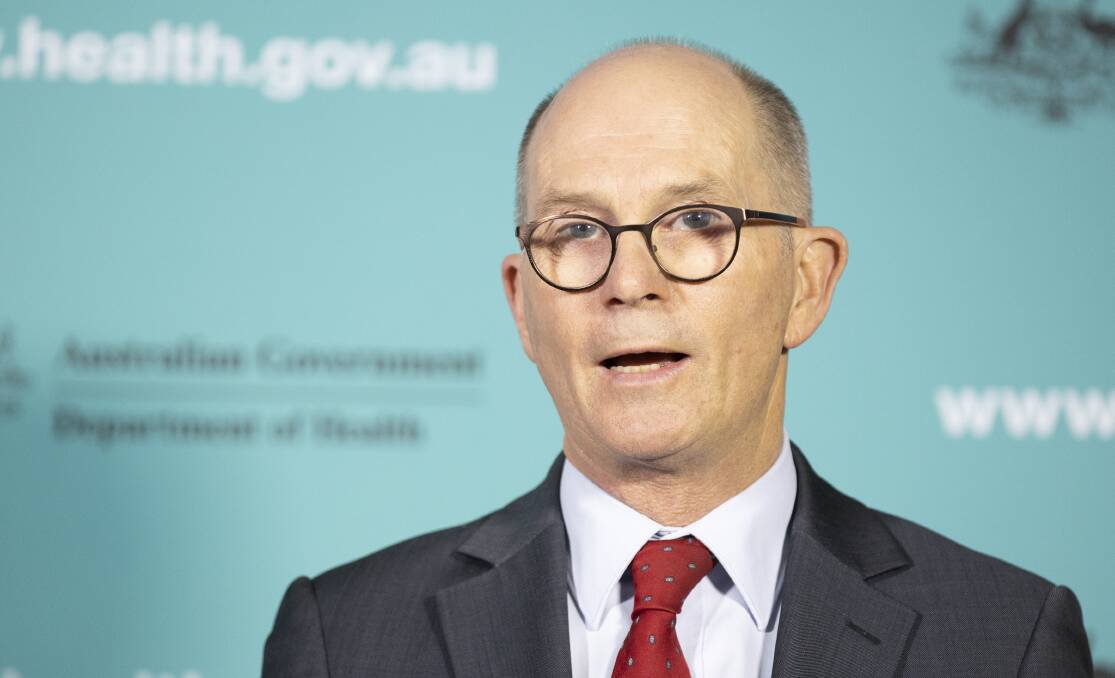
Health authorities look set to finally release the modelling on how many coronavirus cases they expect in Australia.
Subscribe now for unlimited access.
or signup to continue reading
The government has faced repeated questions over many weeks about why it won't release the modelling, and in recent days a chorus of scientists, medical experts and others have called for the data. Other countries have released the information, but Australian authorities have steadfastly refused to date.
On Monday, Deputy Chief Medical Officer Paul Kelly said he had asked his staff to organise a meeting later this week where the modelling would be "unlocked". He didn't give details, but he said the modelling was changing very rapidly.
NSW Chief Health Officer Kerry Chant said on March 12 that the health system is gearing up for 20 per cent of the population to be infected in the first wave - which, across the country, would be about 5.1 million people. Of those, about 5 per cent might need intensive care, which might mean 255,000 people. The equivalent Canberra figures are 84,000 infected and 4200 requiring intensive care.
At the moment, 55 people are in intensive care around the country and 18 have died.
READ MORE:
Australian National University economics professor Quentin Grafton said on Monday if Australia limits infections to 1 per cent of the population, it could see 48,000 fewer deaths than a 20 per cent infection rate.
Professor Grafton has called for a much stronger lockdown, and for an 80 per cent wage subsidy for all workers, including casuals and part-timers who can't work. With much more testing and tracking of people with the virus, Australia would also have an exit strategy out of a lockdown within a few weeks, he said, writing for the Asia Pacific Policy Society.
"Such an approach combines 'sharing the burden' with 'flattening the curve', a two-fold economic and public health approach that would save lives while minimising economic disruption, especially for younger and casual workers who are the most disadvantaged by severe physical distancing," he said. "It's the smarter and safer strategy, and Australia must do it.
The current strategy of a partial lockdown, which he described as "the Australian experiment", was a much higher risk strategy, he said, that risked more lives, a higher economic cost, and a longer pandemic.
READ MORE:
Professor Grafton said based on the March 29 case number of 3984 and the slowing daily rate of growth, Australia was likely to have 5715 cases by Thursday, April 2 (with a range of 5510 to 6835).
In Australia, the infection rate began by doubling roughly every four days, and is now doubling every seven days.
Professor's Grafton's data is based on a mortality rate of 1 per cent. The true mortality rate worldwide is unknown. Official data shows a global death rate of nearly 5 per cent, but that is believed to be based on a vast underestimation of the actual number of cases, given limits on testing throughout the world.
Last week, the Australian Academy of Science called on the government to release its modelling and other data and reports behind its decisions. President John Shine said the information would not only boost public confidence and compliance, but would allow the "scientific know-how of the nation" to be brought to bear on solutions.
- For information on COVID-19, please go to the ACT Health website or the federal Health Department's website.
- You can also call the Coronavirus Health Information Line on 1800 020 080
- If you have serious symptoms, such as difficulty breathing, call Triple Zero (000)
We have removed our paywall from our stories about the coronavirus. This is a rapidly changing situation and we want to make sure our readers are as informed as possible. If you're looking to stay up to date on COVID-19, you can also sign up for our twice-daily digest here. If you would like to support our journalists you can subscribe here.


